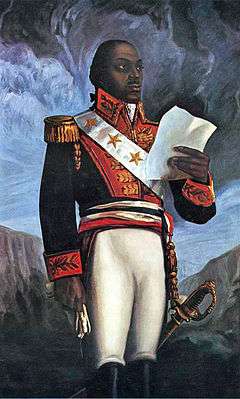New York Slave Revolt of 1712
| North American slave revolts |
|---|
 |
|
The New York Slave Revolt of 1712 was an uprising in New York City, in the British Province of New York, of 23 enslaved Africans who killed nine whites and injured another six. More than three times that number of blacks, 70, were arrested and jailed. Of these, 27 were put on trial, and 21 convicted and executed.
Events
In the early 18th century, New York had one of the largest slave populations of any of England’s colonies, slavery in New York differed from some of the other colonies because there were no large plantations.[1] Enslaved Africans lived near each other, making communication easy. They also often worked among free blacks, a situation that did not exist on most plantations. Slaves in the city could communicate and plan a conspiracy more easily than among those on plantations. [2]
Events that presumably led to the revolt include a decrease in freedom and status when the colony changed hands from Dutch to British. Under Dutch rule, freed slaves had certain legal rights, such as the rights to own land and to marry.[3] After the British took over New Amsterdam in 1664 and made it the colony of New York, they enacted laws that restricted the lives of enslaved peoples. A slave market was built near present-day Wall Street to accommodate the increase in slaves being imported by the Royal African Company. By the early 1700s about 20 percent of the population were enslaved black people. The colonial government socially restricted this group through several measures: requiring slaves to carry a pass should they travel more than a mile from home; marriage was discouraged; they could not gather in groups larger than three; and they were separated into galleries during church services.[4]
The men gathered on the night of April 6, 1712, and set fire to a building on Maiden Lane near Broadway.[2] While the white colonists tried to put out the fire, the enslaved African Americans, armed with guns, hatchets, and swords, attacked them and ran off.[5]
Aftermath
Seventy blacks were arrested and put in jail. Six are reported to have committed suicide. Twenty-seven were put on trial, 21 of whom were convicted and sentenced to death. Twenty were burned to death and one was executed on a breaking wheel. This was a form of punishment no longer used on whites at the time. The severity of punishment was in reaction to white slaveowners' fear of insurrection by slaves.
After the revolt, laws governing the lives of black and Indian slaves in colonial New York were made more restrictive. Slaves were not permitted to gather in groups of more than three, they were not permitted to carry firearms, and gambling was outlawed. Other crimes, such as property damage, rape, and conspiracy to kill, were made punishable by death. Free blacks were still allowed to own land, however. The land of freed black family of Anthony Portuguese (alternate spelling is Portugies),[3] that makes up a portion of present-day Washington Square Park, remained in the hands of his daughter and grandchildren (See p. 10).[6] Slave owners who decided to free their slaves were required to pay a tax of £200, a price much higher than the price of a slave. In 1715 Governor Hunter argued in London before the Lordes of Trade that manumission and the chance to inherit part of a master's wealth was important to maintain in New York. He relayed that this was a proper reward for a slave who had helped a master earn their lifetime's fortune, and could keep the slave from descending into despair. [7]
References
- ↑ "MAAP - Place Detail: Slave Revolt of 1712". Retrieved 25 November 2016.
- 1 2 Africans in America/Part 1/New York's Revolt of 1712 accessed January 5, 2008.
- 1 2 http://www.newnetherlandinstitute.org/files/7313/5067/3659/6.2.pdf
- ↑ LLC, New York Media (5 October 1992). "New York Magazine". New York Media, LLC. Retrieved 25 November 2016 – via Google Books.
- ↑ Hunter, Robt., in Documents Relative to the Colonial History of the State of New York, E.B. Callaghan, ed (1885)
- ↑ http://s-media.nyc.gov/agencies/lpc/arch_reports/821.pdf
- ↑ "New York Slave Revolt 1712 - SlaveRebellion.org". Retrieved 25 November 2016.
Further reading
- Berlin, Ira & Harris, Leslie (2005), Slavery in New York, New York: New Press, ISBN 1-56584-997-3.
- Horton, James & Horton, Lois (2005), Slavery and the Making of America, New York: Oxford University Press, ISBN 0-19-517903-X.
- Katz, William Loren (1997), Black Legacy, A History of New York's African Americans, New York: Atheneum, ISBN 0-689-31913-4.
- Johnson, Mat (2007), The Great Negro Plot, New York: Bloomsbury, ISBN 1-58234-099-4 (Fiction).